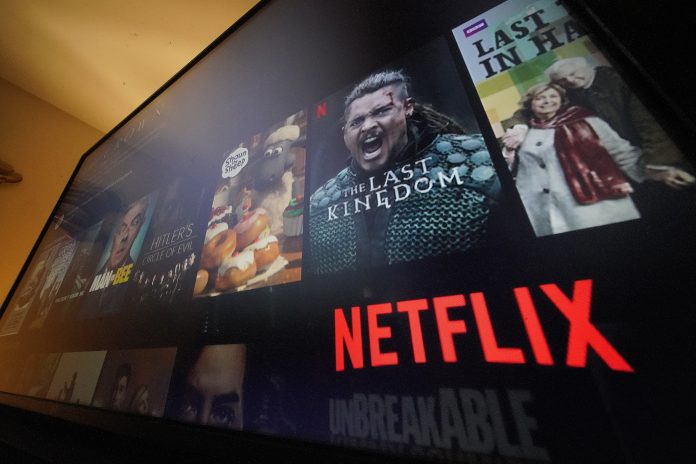By John Schmoll
Wealth of Geeks
AppleTV+ just announced a price increase for their streaming service – the second in fewer than 5 years, doubling subscriber costs.
Is streaming turning into cable — the very thing it was created to disrupt? The landscape of television consumption is undergoing a rapid shift.
Traditional cable TV subscriptions are experiencing an unprecedented decline. Nielsen data indicates that linear TV viewership fell below the 50% threshold for the first time in July. The reality is every major cable, satellite, and live TV streaming service reported a loss in subscribers in the second quarter of 2023, with the notable exception of YouTube TV.
Streaming Costs More
As more consumers turn to streaming options, they face a new challenge: rising costs. According to a study by LG Ad Solutions, 63% of consumers prefer streaming free content to committing to a paid subscription.
Despite this preference, the potential move by local TV stations to press the FCC into treating live TV streaming providers, such as YouTube TV and Hulu Live, in the same manner as cable operators poses a significant risk. Such a change would likely result in added fees that would invariably be passed onto subscribers, pushing costs even higher.
For many, the allure of streaming was its cost-effectiveness. The LG Ad report “ How We Watch: Trends in TV Habits ” reveals that 47% of consumers view streaming as the more cost-effective option. On average, households spend $62 monthly on streaming, a noticeable savings over the $95 typically spent on traditional TV.
However, this cost advantage might go away. A concerning trend emerges with the growing fragmentation of the streaming market and subsequent price hikes. A streamer’s churn rate is the percentage of subscribers who abandon their streaming subscriptions.
Data from consumer measurement platform Antenna shows that churn rates measured in July rose across almost all major platforms, except for Netflix. Subscribers are becoming increasingly price-sensitive and willing to sacrifice convenience for savings.
So how can viewers maintain access to quality television content without overspending for it?
Re-Evaluate the Need for Live TV
Once the crown jewel of broadcasting, live TV is losing its attractiveness. Except for select sporting events and a handful of live broadcasts, real-time viewing is less critical than it once was. By sidestepping the live TV trap, viewers can save a significant amount of money.
Practice Patience
In today’s world of instant gratification, patience is a virtue — and a cost-effective one. Rather than spending upwards of $70 per month on premium live services, consumers could consider delaying their viewing by a mere 24 hours. Popular alternatives to cable TV, such as Hulu, Peacock, and Paramount+, offer network and original content at a fraction of the cost, with an average monthly fee of around $10.
Go Old School With an Antenna
There’s a certain charm in revisiting older technology. Local channels, often free from the constraints of costly subscriptions, can be accessed via an antenna. This combination of the old and the new provides a free TV streaming solution for those unwilling to compromise on local network content.
Explore On-Demand Options
Platforms like Netflix and Max have ushered in a new era of on-demand viewing. These platforms offer better value without sticking to schedules or running repetitive advertisements.
Experience the Joy of Fast
With the advent of Free Ad-Supported Streaming Services (FAST) like FreeVee, Pluto, and Tubi, viewers don’t need to worry about subscription fees. Freestream from Sling TV is a contender for those looking for an affordable live TV option.
Sports Enthusiasts, Take Note
Dedicated sports streaming services like the Sling Season Pass option might be the ideal cost-conscious solution for die-hard sports fans. These platforms offer comprehensive coverage without the added fluff of unrelated content.
Opt for Budget Live Services
Philo and Frndly have emerged as frontrunners for those seeking budget-friendly live TV options. Their offerings, which eschew sports in favor of family and lifestyle content, cater to a niche yet sizable audience.
The Road Ahead
The entertainment landscape is in a period of flux. As traditional TV takes a back seat, streaming emerges as the front runner, even with its growing pains. This surge in digital consumption has given birth to various choices, but has also raised questions about affordability and value for money. The key for consumers, as we move forward, is adaptability.
If they’re armed with information, viewers can craft personalized entertainment solutions tailored to their preferences and budget. Embracing a blend of both traditional and cutting-edge viewing methods, from antennas to on-demand streaming, can yield substantial savings without compromising on content quality.
As the industry evolves, consumers must remain proactive. New platforms, pricing models, and viewing paradigms will continue to emerge. Staying updated on industry trends, reassessing streaming subscriptions periodically, and actively seeking value-driven alternatives are essential strategies in the ever-shifting world of television.
This article was produced by Media Decision and syndicated by Wealth of Geeks.




